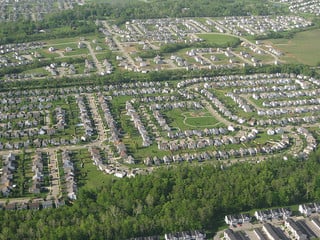 "They just aren’t built like they used to be."
"They just aren’t built like they used to be."
People say it about practically everything that’s been around for more than a few decades — cars, houses, furniture, blue jeans. Usually it's said disparagingly in reference to a lack of quality and a nostalgia for “the good ol’ days,” but there have been improvements to some of the old ways. After all, we used to have lead in our paint.
Homes have changed drastically over the years — not necessarily in quality but in features, layouts and priorities. As real estate investors, paying attention to the age of a property and even the superficial details of its construction can be a useful strategy in appealing to tenants and deciding on renovations and presentation.
The Census Bureau released a study comparing new homes built from 1973 to 2011.
Generally, though there are exceptions, the changing trends in homebuilding can be chalked up both to advancements in technology and preferences of home buyers. While this study didn’t go into more technical details relating to homes (for instance, the size of the kitchen is important to a lot of people and one of the most vital areas to target for renovations for real estate investors, while this was less of a priority in the past).
People have a fascination with the new.
The study shows that houses are increasingly two-story (and split-level homes have all but disappeared), the numbers of both bedrooms and bathrooms have increased, basements are all but extinct and vinyl, cement and other materials are replacing traditional exteriors, even brick.
In general, the size of home has been on a fairly steady increase over the years.
While there will be varied preferences among tenants, the new certainly attracts more than the old. Few people these days are looking for an oak-paneled basement (unless they’re converting it to a “man cave”).
Determine Priority Aesthetic Renovations
When it comes to an older home, there will be things you’ll need to renovate - updating appliances, HVAC systems and so on. But when it comes down to aesthetics, what renovations in an older home will best attract tenants?
First, give attention to the kitchen and bathrooms. Get rid of the pastel pink tiles and matching tub. Replace the countertops with something sleek and modern (though not necessarily granite. There are plenty of alternatives that are cheaper and still look refined) and splash fresh paint on the walls. You can even consider knocking out a wall or two for a fresh, more open floor plan in the kitchen.
There can be a distinct charm to old homes, however, so redoing everything isn’t necessary. An older property doesn’t have to aspire to looking like the newest home on the block. Play up its charm — polish the old hardwood floors, for instance. Don’t try to cover the genuinely good bones of an older property.
Change the trends of yesteryear that are passé and tired, but keep the classic and vintage elements that will appeal to tenants. Do some research on what people love and hate about older properties. Ask around. Older homes can be valuable additions to your investment portfolio, especially when combined with smart, informed renovations.
What’s the first thing you think is valuable to change about an old house?
-----------------------------------------------












